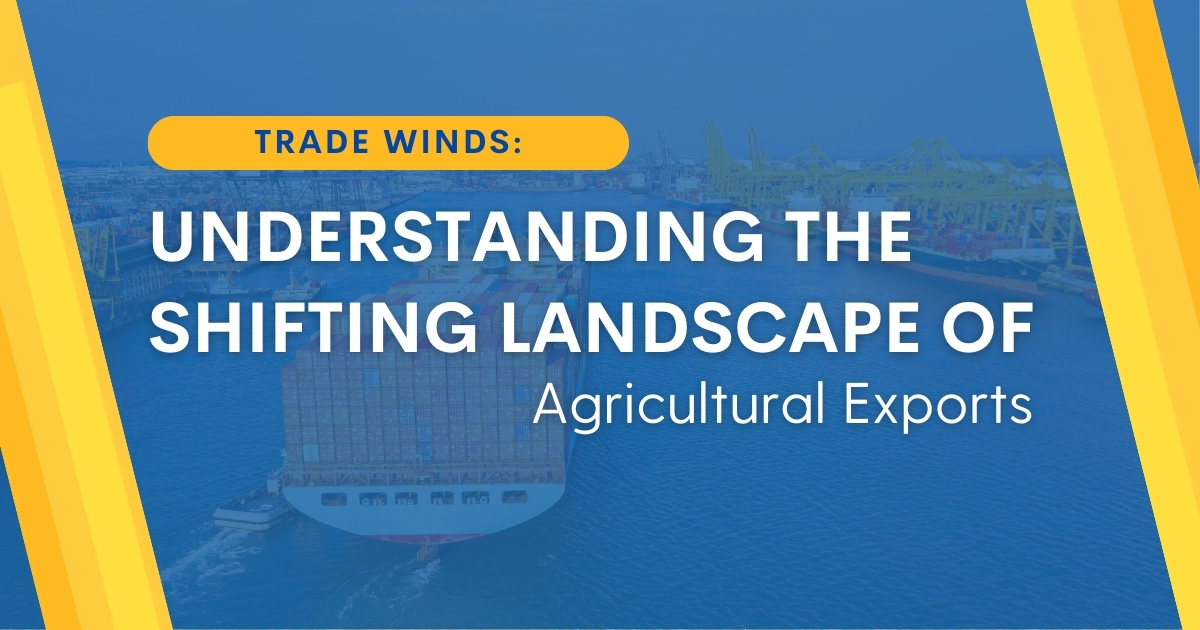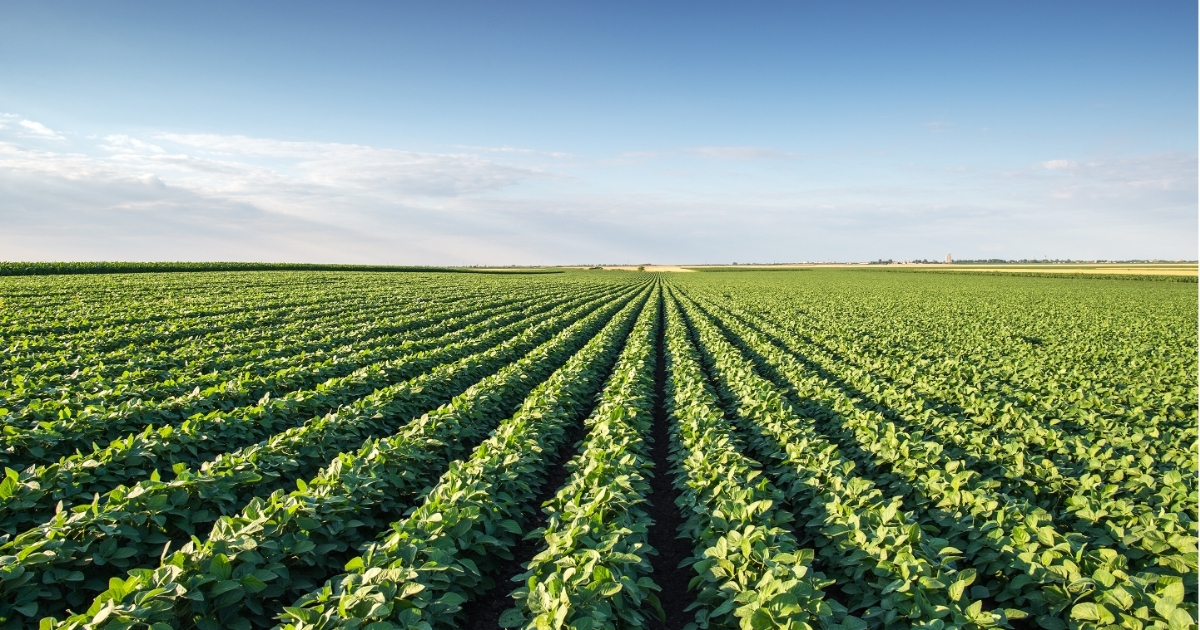
Category: Cooperative Extension

Trade Winds: Understanding the Shifting Landscape of Agricultural Exports
April 19, 2024 Written by Kofi Britwum, Assistant Professor of Farm Management and Agricultural Economics (britwum@udel.edu)
Drought conditions experienced in Brazil in 2023 could mean a lower-than-expected soybean harvest. If you are outside mainstream agricultural production, you may rightly wonder whether this information has anything to do with you. Not directly, perhaps. But, thanks to international trade, events in other parts of the world can have a telling impact on populations thousands of miles away. In the specific case of soybean, given Brazil's recent status as the largest exporter, reduced production levels, in addition to other factors, could present an opportunity for higher prices for American soybean farmers in international markets, which is welcome news.

A Major Trading Nation
The US continues to be a major trading nation, second only to China. Throughout the 1960s and 1970s, the overall US trade balance was either a surplus or a marginal deficit. However, this changed in the 1980s when trade deficits began to widen. That is, the US was importing more than it was exporting. The story has been different for US agricultural trade, though; for a significant portion of this 21st century, agriculture has registered a surplus. Agricultural exports have primarily consisted of bulk commodities such as grain, cotton, oilseeds, and tobacco alongside high-value products such as meat, milk, flour, and processed/fresh fruit and vegetables.

Trade Deficit
Despite the many years of agricultural trade surplus since the turn of this century, it is beginning to mirror the overall US balance of trade - a deficit. Deficits were recorded in 2019 and 2020, amounting to $1.3 billion and $3.7 billion, respectively. Additionally, an agricultural trade deficit of approximately $16.7 billion was recorded in 2023, with projections indicating an even larger deficit in 2024, reaching approximately $30 billion.
So, what are the reasons for the agricultural trade deficits?
At the heart of this is an increase in demand, both in volume and value, for agricultural imports. However, there are underlying reasons at play. A strong US dollar means our goods are more expensive to other countries, while on the other hand, it bolsters American consumers’ purchasing power for goods produced abroad. On the plus side, a strong dollar potentially means lower costs for farmers for inputs such as fertilizer or machinery. Year-round demand for fresh fruit and vegetables also contributes to high US agricultural imports, especially from Mexico, Peru, and Chile.

On a bigger stage, there is some politics at play. In 2019, for example, the US was embroiled in a trade war that saw retaliatory tariffs imposed on agricultural products by China, Canada, the European Union, Mexico, India, and Turkey. According to the US Department of Agriculture Economic Research Service, this is estimated to have depressed US exports by $27 billion between the middle of 2018 to the end of 2019. In addition, growth in South American agriculture is displacing the US position with respect to some commodities. Precisely, Brazil has witnessed an expansion in both planted acres and yield of soybeans, and with improved transportation infrastructure, this is shrinking the pie for US soybean exports. For example, in the marketing year 2021/22, Brazil exported 77.1 million metric tons of soybeans versus the US’ 58.7 million metric tons. Although this has not yet impacted the deficit, a potential ban on genetically modified corn by Mexico may not be good news for the US.
How concerned should we be then about the agricultural trade deficit?
The agricultural trade deficit itself is neither inherently negative nor positive. Many of us, for instance, have a trade deficit with grocery stores, purchasing more than we sell to them (if at all) while, at the same time, maintaining a trade surplus in other aspects, such as with employers where we sell our labor. In the context of agriculture, if US farmers face displacement by competitors in major export markets, it could raise concerns about a shrinking market for agricultural exports. Being persistently outcompeted, especially in traditional export markets, can have cascading effects on the farm economy together with associated jobs wrapped around agricultural export supply chains. Despite fluctuations, US agricultural exports have generally increased over the past two decades. If this upward trend continues, the deficit would mostly signal a growing demand for agricultural imports, which may be driven by increasing purchasing power or evolving consumer preferences. Ultimately, while these developments do not immediately signal alarm, strengthening trade relationships with current partners and exploring new export markets remain crucial for sustaining the growth of US agricultural trade.
